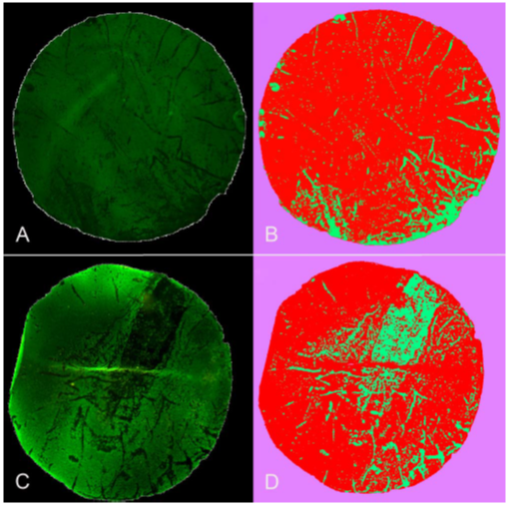Comparison of Tri-folded and Scroll-based Graft Viability in Preloaded Descemet Membrane Endothelial Keratoplasty
Barnes K, Chiang E, Chen C, Lohmeier J, Christy J, Chaurasia A, Rosen A, Vora P, Cai S, Subramanya A, Durr N, Allen R, Eghrari AO
Cornea 38 (3) 2019
https://www.ncbi.nlm.nih.gov/pubmed/30550395
Abstract
PURPOSE: To compare corneal endothelial damage associated with 2 techniques for preloaded Descemet membrane endothelial keratoplasty (DMEK): a tri-folded graft stored in a plastic cartridge designed for DMEK and a scrolled graft stored in a modified Jones Tube, at the time of preparation and after shipping.
METHODS: DMEK grafts were prepared at the Rocky Mountain Lions Eye Bank. The grafts were either tri-folded and loaded in a plastic cartridge or scrolled and loaded into a modified Jones Tube. In each group, the grafts were then either immediately removed from the cartridges or shipped for 48 hours. The grafts were then stained with Calcein AM and imaged using a fluorescent microscope. Endothelial cell loss (ECL) was determined using trainable segmentation in Fiji by 2 graders. At each time point, rates of ECL loss were compared across the 2 groups. To explore the role of donor characteristics, a multivariable regression model was produced to account for method (tri-folding vs. scroll), donor age, donor gender, death-to-preservation time, death-to-preparation time, and shipping.
RESULTS: A total of 40 grafts were prepared, processed, imaged, and analyzed. No significant difference in cell loss was seen between groups at either time point alone. In the multivariate model, no significant increase in cell loss was associated with either tri-folding (3.7% less ECL; P = 0.051) or shipping (4.3% less ECL; P = 0.049).
CONCLUSIONS: All techniques used resulted in clinically acceptable levels of ECL. Tri-folded tissue in a plastic cartridge did not result in ECL inferior to a scroll when prepared either immediately or preloaded for 48 hours.
